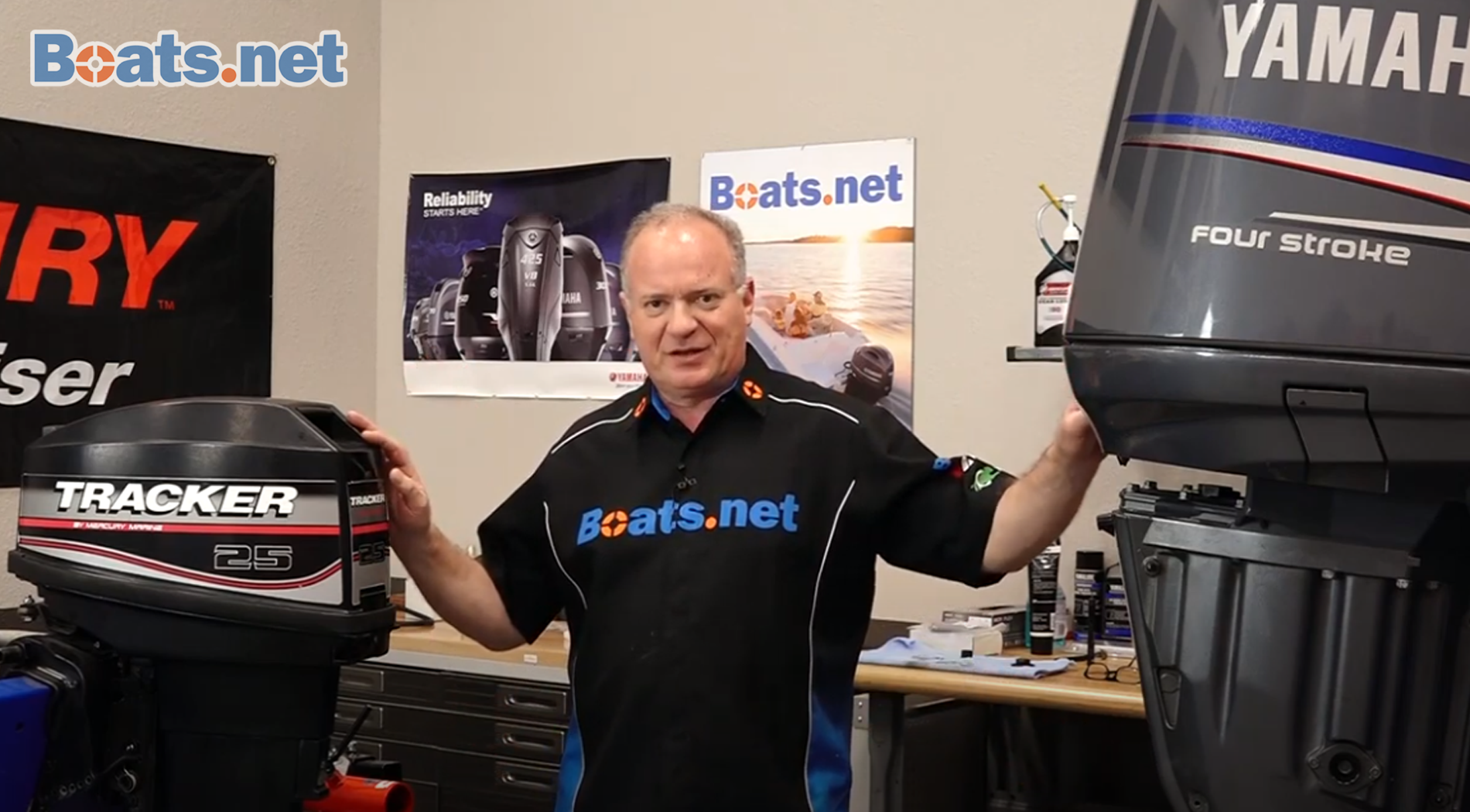
For environmental concerns four-stroke outboards produce far fewer harmful emissions. Today the average is 58 horsepower.

While in 2010 the average engine power was 46 horsepower.
Outboard motors 2 stroke versus 4 stroke. 2 Stroke vs. 4 Stroke Outboard Top Speed As stated previously 2 stroke motors used to be the choice among those looking for speed. However 4 stroke motors have become much faster and lighter making todays market very competitive.
Being heavier and more cumbersome could make a 4-stroke outboard incompatible with smaller boats better served by a lightweight 2-stroke engine. The 4-stroke motors lubrication system requires periodic maintenance including replacing the oil and filter whereas a 2-stroke engine simply requires a full tank of oil. It really comes down to how the cylinders are lubricated.
4-stroke outboards have internal oil reservoirs and sumps which need regular oil level checks filter replacements and oil changes at least annually. 2-stroke outboards generally have an external oil tank with the oil and fuel mixture injected into the cylinder. The main disadvantage of the two-stroke outboard motor is that it does not have the same longevity as a four-stroke.
Two-stroke motors require a mixture of oil and gas to lubricate all of the moving parts which can be expensive and somewhat difficult to formulate. Additionally two-stroke engines are less fuel-efficient get fewer miles per gallon and produce more emissions than four-stroke outboard motors. Also due to being less complicated in construction than a four-stroke outboard the two-stroke outboard is comparatively lighter.
Two-stroke engines have ports instead of valves which makes them easier to construct than four-stroke engines. On average 2 stroke outboard motors are lighter than 4 stroke outboard motors. 2 stroke outboard motors have fewer parts and moving pieces than 4 stroke motors.
For this reason they tend to be lightweight. The sale of outboard engines is 20 higher than they were in 2010. These engines are also getting more powerful.
Today the average is 58 horsepower. While in 2010 the average engine power was 46 horsepower. Another development is the increase in the debate of 2 stroke vs 4 stroke.
For example two-stroke motors are lighter faster in most cases and less expensive. Four-stroke motors are cleaner smoother and more economical. Many people who run in lakes and rivers prefer 4 stroke boat motors because they make great trolling motors and meet the 2006 EPA mandated requirements.
2 stroke outboards are smaller and lighter than their 4 stroke of an equivalent power. Due to them being mechanically simpler with fewer major parts to degrade or go wrong the are easier to maintain to a basic level. Evinrude 2 stroke Mercury Optimax 2 stroke Mercury 4 stroke Yamaha 4 stroke.
On the con side a two-stroke outboard motor produces more pollution smoke are non-two cycle oil injection models have a rougher idle than their four-stroke counterparts and are sometimes harder to start. Four-stroke outboard motors are cleaner quieter smoother provide more fuel economy and are often more reliable. In the past 2-stroke outboard motors were more powerful than 4-stroke outboards of the same size.
However the evolution of engine management systems and electronic fuel injection coupled with lighter stronger metals and alloys means the gap for performance between a 4-stroke outboard and a 2-stroke outboard has narrowed. I see two downsides to the 4-strokes. One is weight they generally weigh a lot more than the 2-stroke of same HP.
If you have a boat that is already heavy to the rear you may be adding unacceptable weight. Well most banned 2-stroke areas are just banning the premix motors so an oil-injected 2-stroke will likely be OK. Otherwise as was noted the weight difference of a 4-stroke may be offset by going down one motor family size.
Say for instance getting a 30hp FI TohatsuNissanMerc. Hopefully this will give you a better understanding of the differences between 2-stroke and 4-stroke motors. Granted the gap between the two has closed in recent years there are still subtle nuances that current and prospective boat owners need to be aware of.
2 stroke outboards 4 stroke outboards. Cheaper to maintain. On average maintenance costs for an Evinrude outboard engine are up to 50 less than maintenance costs for a four-stroke outboard over the first three years of ownership.
My E-Tec saves me thousands. An Evinrude E-TEC is up to 50 quieter than the old 2-strokes. Types of Outboard Motors.
The two types of outboard motors available are 2-Stroke and 4-Stroke engines. There are positives and negatives to each of these engine types. Because of the light weight 2-Stroke engines are chosen when good top end speed and acceleration is needed.
4-Stroke engines run smoother and more economical and are usually. 4-Stroke Outboard Motor Vs 2-Stroke Outboard Motor The decision to purchase an outboard engine is getting more selective as technology improves. As of now the majority of consumers are faced with several options when deciding upon what kind of outboards will best suite them.
4 stroke outboards have to have a heavier flywheel in order to balance out the fact that it only gets 1 kick every 4 strokes whereas the 2 stroke gets powered every 2 strokes instead. Imagine having to throw a ball 100m. A 2 stroke can throw 2 x fairly easy 50m throws but a 4 stroke has to throw one MASSIVE 100m throw.
The 4 Stroke Motor. In the early years the 4-stroke marine outboards were large and very expensive to maintain. Developments over the years have helped the 4-stroke shed some weight to be closer to a 2-stroke of comparable output.
Much like cars and trucks consumers have some choices between EFI and DFI systems also. Since a 2 stroke has twice as many firing strokes per 1000 revs than a 4 stroke but each power stroke is less efficient the two have quite different power characteristics. But in something as mundane as an out board the power developed is much more a matter of what the engine designer designed.
A four-stroke motor can be up to 50 more fuel efficient than a two-stroke motor with the same horsepower. For environmental concerns four-stroke outboards produce far fewer harmful emissions. The lubrication system of four-stroke engines ensures that all moving parts are constantly bathed in oil which greatly increases the life of internal.